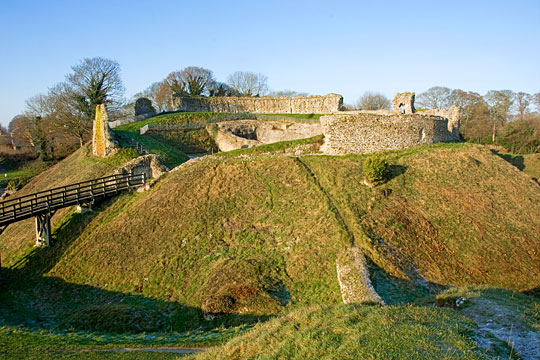Significance of Castle Acre Castle and Bailey Gate
The combination and survival of castle, planned town and priory at Castle Acre vividly illustrate the physical impact of the Norman Conquest on the face of England. The castle itself is of significance in illustrating, as originally built, an alternative to the ‘motte and bailey’ format, and in the form and development of the stone building in the inner bailey.

- In its final Norman form, Castle Acre is a superb and well-preserved representative of the ‘motte and bailey’ castle.
- The castle in its initial form represents an interesting hybrid between the motte and bailey and the ‘ringwork’, serving as a reminder of the variety of forms that Conquest-period castles could take.
- The building in the inner bailey, in its earliest form – as an undefended, double-pile (two-room deep), two-storey structure, apparently habitable at both levels – has only a handful of approximate parallels. It belongs to no recognised form of 11th- or 12th-century domestic building in England or Normandy.
- The way in which the conversion of the stone building into a great tower was first attempted in about 1140 is unique, as is the way in which this was eventually carried out in the 1160s. Nevertheless, the building is also significant in adding to the corpus of non-defensive 11th- and 12th-century domestic buildings converted into great towers in this period.[1]
- The exceptional preservation of the town defences gives Castle Acre special significance in its own right, and informs our understanding of less well-preserved examples elsewhere.
- Evidence survives for the ‘manipulation’ of the surrounding landscape, and its study by Robert Liddiard has improved our understanding of how 12th-century castle builders used and organised the surroundings of their residences.[2]
READ MORE ABOUT CASTLE ACRE CASTLE AND BAILEY GATE